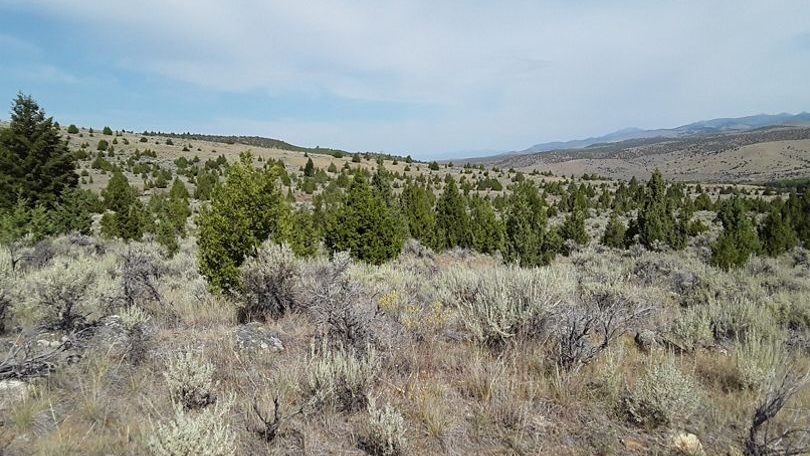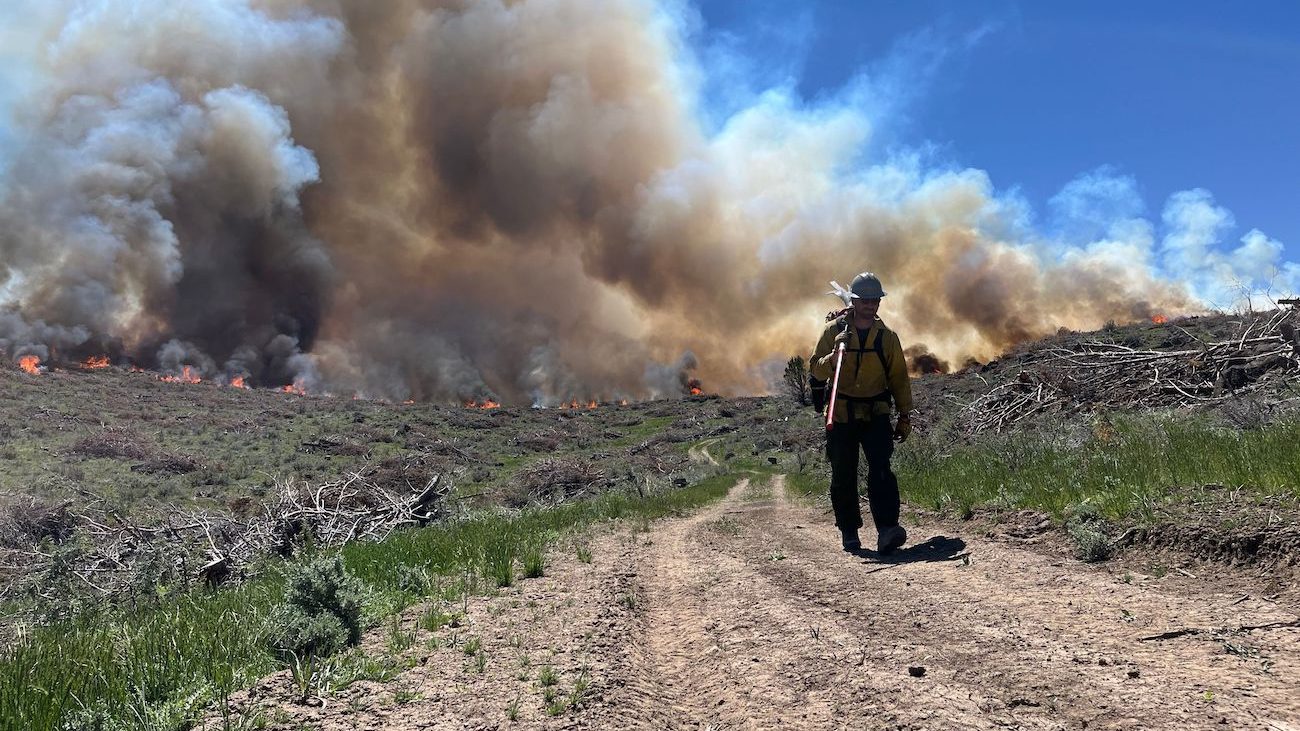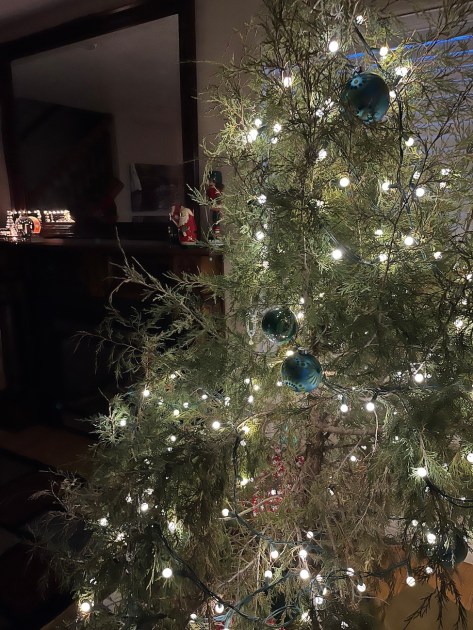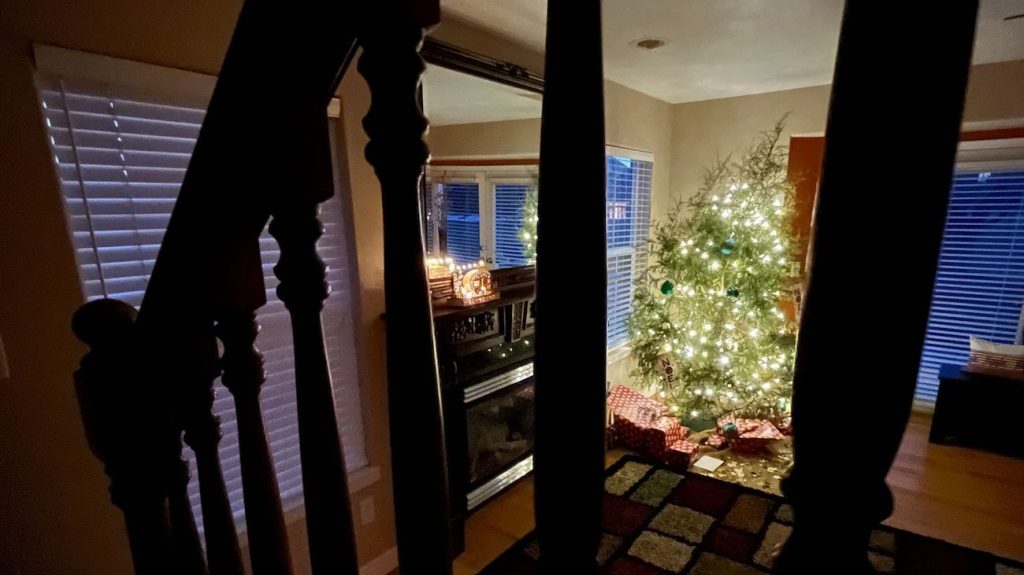The snow arrives early and stacks deep. By the time we trek into the backcountry to cut our Christmas tree over Thanksgiving weekend, we know we won’t make it to the high elevation of traditional holiday evergreens.
There’s just too much powder so I look around the lower lands where we had to park our truck before it was buried and propose an alternative for our family.
“Let’s cut a juniper!” I say enthusiastically.
While those who share my household stare at me like I’m suggesting something blasphemous, I hear two other voices in my head. Both of them know juniper well. Josh Rydalch cuts it. Connor White burns it.
“We called a juniper a cedar because we thought it would smell good like cedar,” says Josh Rydalch who grew up in Plano, Idaho. “When I was eight I remember we cut ‘er down, got ‘er home and threw ‘er up on a pot of water. Low and behold, bugs crawled out of it and the house smelled like pee.”

Cutting your own Christmas tree does increase the odds of hauling unwanted critters into your house, but evergreens smell festive. The 7-foot juniper of Josh’s childhood did not.
“We grew up on a dairy and it was still stinky. When people on a dairy say it stinks, it’s pretty bad,” he says. “You’d walk in the house and say, ‘Who peed in the house?’ We didn’t have pets in the house either so we knew it was that juniper.”
Milder-smelling alternatives like Christmas cactus or olive branches are options for ornaments, but I don’t have convenient access to either of those. They don’t grow where I live. What does grow where I live is juniper.
A lot of juniper.
I start shopping the sagebrush steppe for a specimen to chop. My family, not convinced I’m serious, just stares. My husband holding the handsaw. My youngest son holding the yellow, sticky tag to wrap around the top of the tree proving we purchased a Christmas tree harvesting permit from the U.S. Forest Service.

The Juniper Expansion
Josh’s stench-fest warning flares in my mind as I lean in close to sniff the lacey-like fringe of my chosen juniper. I don’t smell urine. I smell forest. We’re doing this. Connor would want us to.
“Juniper is supposed to be on the landscape. It’s a native tree, but through our own actions of fire suppression over the last century, it’s absolutely exploded like 600 percent expansion all across the West,” says Connor White, Pheasants Forever Bruneau-Owyhee sage grouse habitat project coordinator. “Fire is what controls conifers and we’ve done a very good job of removing fire from the landscape.”

Connor is bringing fire back. I met him on a massive conifer burn along the Idaho-Oregon border. The blaze was started on purpose, a prescribed burn to remove junipers encroaching on sagebrush. His goal was 30,000 acres of juniper removed annually. He pushed that toward 60,000 acres in 2024.
After wildfire and invasive grass, juniper encroachment is the next threat to sage grouse and sagebrush ecosystems across the West.
“To really affect landscape change at the scale that we need to, we always like to say we need to go from horizon to horizon,” he says. “And it’s working. At an old historic lek site there were six sage grouse displaying this spring and that was four years after we cut all the junipers out of there. Hadn’t been a burn in there in a couple of decades. They were back right after we did the treatment.”

A Tree Fit for Charlie Brown?
That’s motivation enough for me. I’m convinced we won’t have a stinker. A leaner for sure, but not a stinker. The juniper’s crooked posture will display sufficiently in the corner next to our fireplace.
“This is the one,” I say shaking the wider than me, taller than me juniper just in case any bugs need a head start on their exit strategy before they’re in my house. “Cut it.”

My husband reluctantly starts sawing at our Christmas tree’s base. My son laughs at my selection, tags the top when it falls on its side and starts taunting me.
We hooky bob the snow-packed road on our way out. He always hangs on longer than I do. I lose my tailgate grip almost immediately usually blaming the bail on my boots having too much traction.
Our juniper, the other tannenbaum, will end up in the city’s mulch pile the day after Christmas. The resulting compost material will eventually supplement my flowerbeds.
Josh recycles his trees too, but varies his disposal methods annually. He sinks his Christmas trees for fish habitat and deploys them for archery shoots. The type of trees he cuts also varies annually: ponderosa, lodge pole, fir, spruce, but never again a juniper.
“As bad as it smelled,” he says. “It’s one of the memories that never goes away.”




You have to pick a female tree with berries, I had juniper Christmas trees for many years when I lived in Maupin Oregon. Junipers can be really pitchy to the touch, but I loved the smell, and it did not smell like cat pee. As a 34-years long wildland firefighter I’ve also burned a few.
Cheers and tightlines-Peter Martin